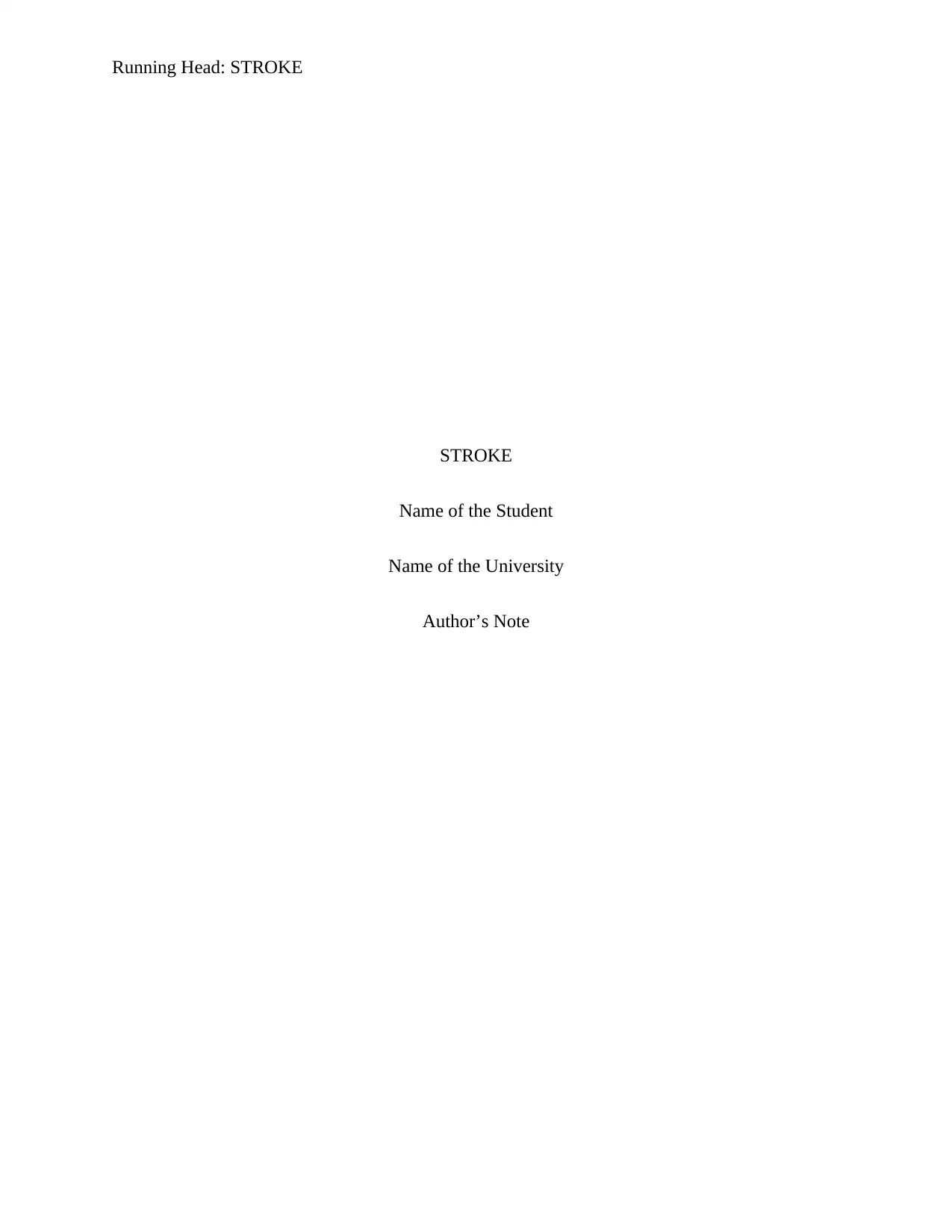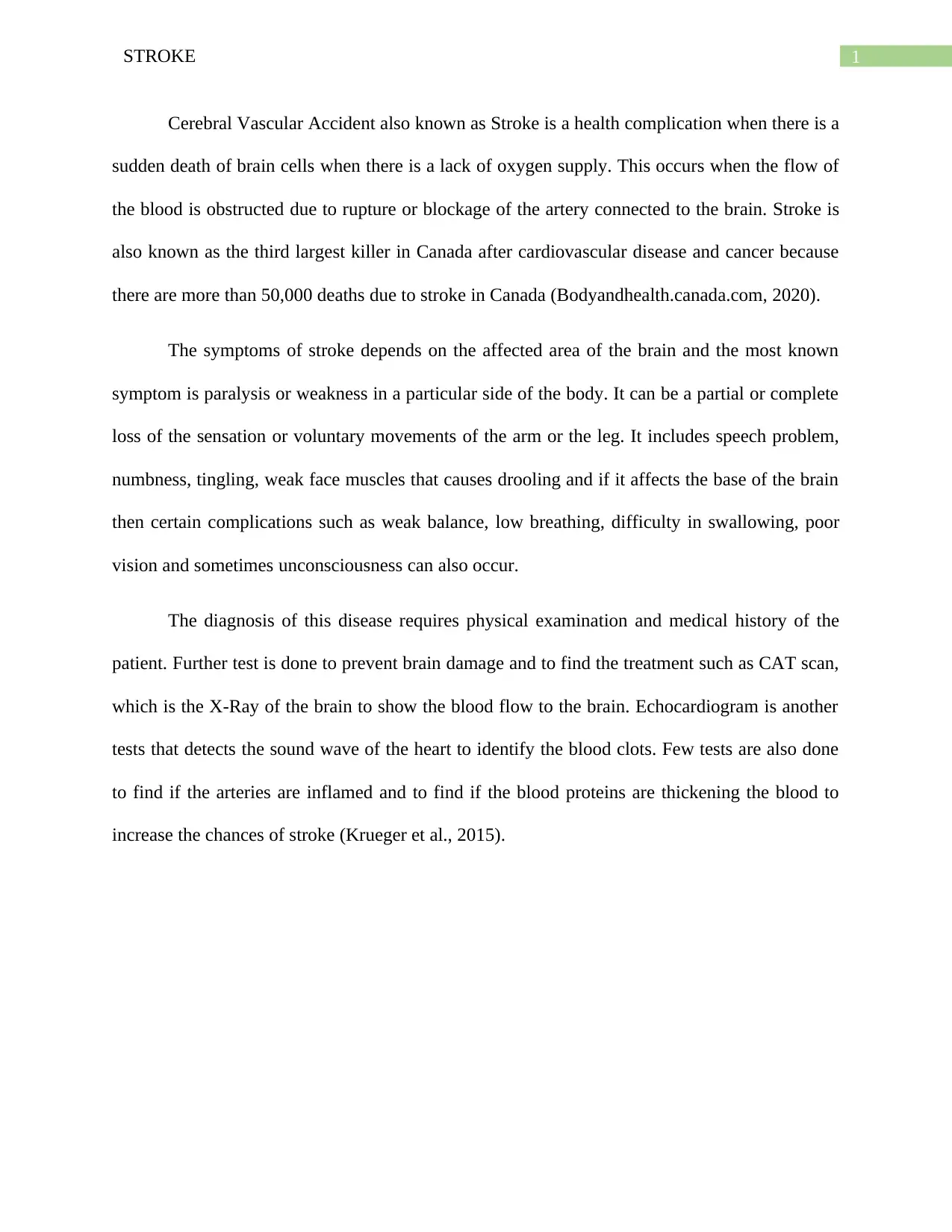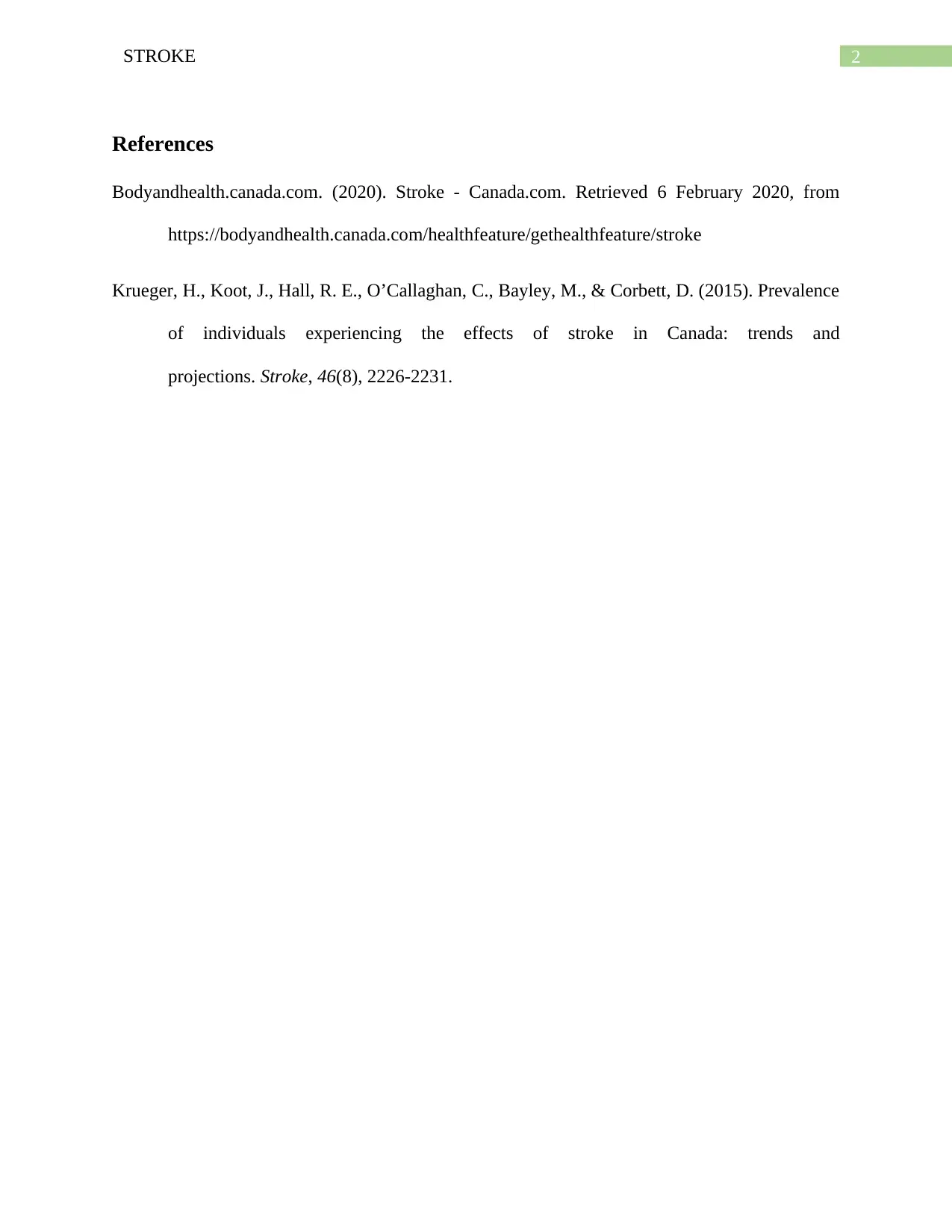Assessment, Care Plan, and Management of Stroke Patients in Canada
VerifiedAdded on 2022/08/16
|3
|384
|170
Report
AI Summary
This report presents a nursing care plan for stroke patients, addressing the health challenge of impaired verbal communication resulting from CNS impairment. It outlines a comprehensive approach to patient care, encompassing nursing diagnoses, specific goals, and detailed interventions. The report emphasizes the application of the nursing process, incorporating principles of assessment, collaborative care, and nursing management. It explores health teaching strategies to enhance patient learning and promotes clear communication. The report also highlights the impact of stroke on the Canadian healthcare system, including the prevalence and associated mortality rates. The assignment is based on the provided brief, which outlines the requirements for developing a care plan for surgical and non-surgical conditions, identifying major health problems across the lifespan, and applying critical thinking skills to solve patient care problems.
1 out of 3










![[object Object]](/_next/static/media/star-bottom.7253800d.svg)